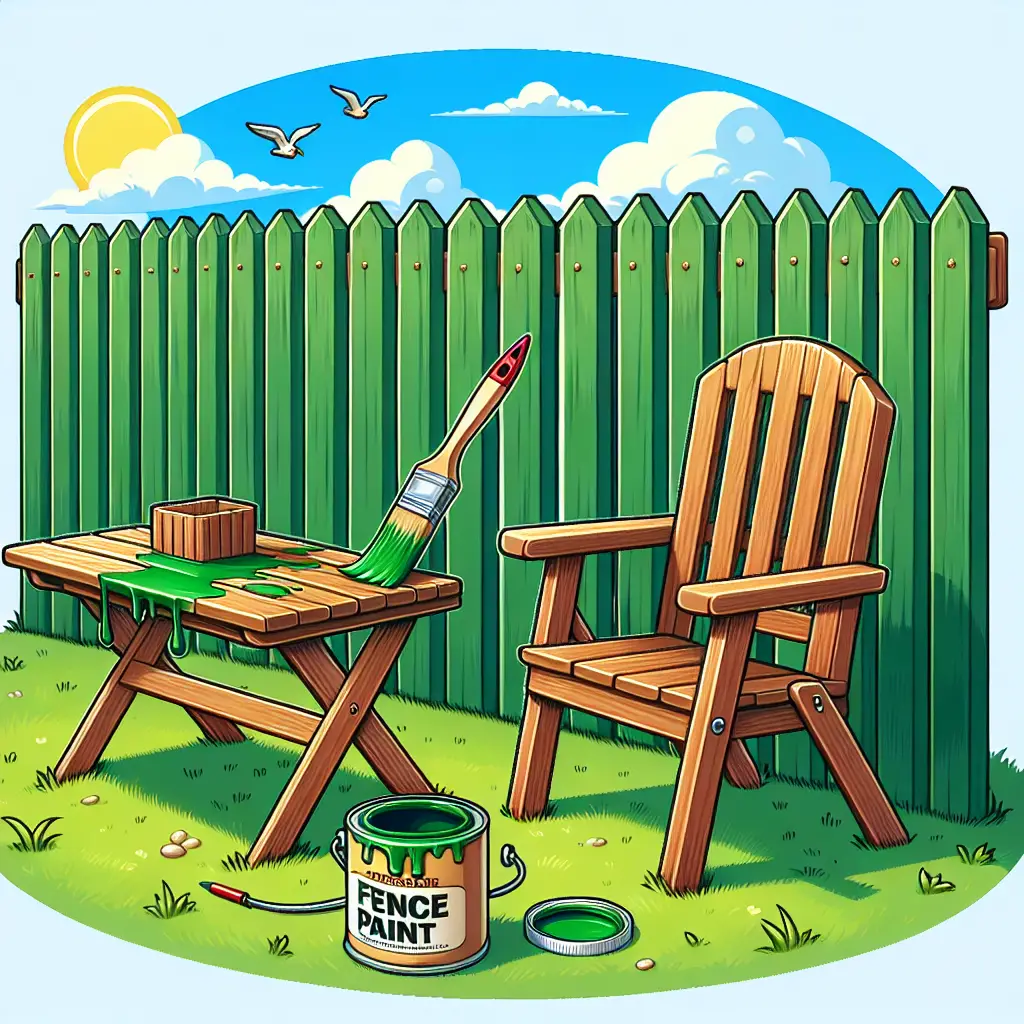Can You Use Fence Paint on Garden Furniture?
When it comes to sprucing up your garden space, the creative spark can lead to a variety of home projects. Whether it’s repurposing old items or trying out new paint applications, DIY enthusiasts are always keen to explore versatile uses of materials. A common curiosity that arises is whether fence paint, typically robust and weather-resistant, can be applied to garden furniture. The answer is not straightforward, and there are important considerations to weigh before you embark on your next backyard makeover with paintbrush in hand.
Understanding Fence Paint and Your Garden Furniture
Fence paint is specifically designed to protect wooden surfaces against the harsh outdoor elements. This durable paint often possesses protective features against rot, mold, and ultraviolet light, giving it a longer lifespan compared to regular paint types. But can this resilience translate well when applied to garden furniture?
Before you dash to pick up that leftover can of fence paint, it’s crucial to understand the material of your garden furniture. Wooden garden furniture is a prime candidate for fence paint, given the similarity to the material of the fence itself. However, garden furniture can also come in metal, plastic, or other treated woods that may not be compatible with fence paint’s composition.
The Pros and Cons of Using Fence Paint on Garden Furniture
The use of fence paint on garden furniture does come with advantages and disadvantages that you should consider:
Pros:
– Durability: As mentioned earlier, fence paint is made to endure outdoor conditions, including rain, snow, and sun, which is beneficial for garden furniture that remains exposed throughout the year.
– Cost-Effective: Utilizing the same paint for multiple outdoor projects can save money, particularly if you’re using leftover paint from a previous task.
– Consistency: Applying fence paint to both your fence and garden furniture can create a seamless and coordinated look in your backyard space.
Cons:
– Aesthetic: Fence paint is typically available in limited colors and finishes, which may restrict your creative vision.
– Flexibility: Garden furniture, particularly chairs and tables, experience more wear and tear due to their usage. Fence paint may not be as flexible and could crack or chip with the movement and weight applied to furniture.
– Finish Quality: The finish of fence paint on furniture is generally not as refined as specialized furniture paint, which can result in a less appealing final look.
Step-by-Step Guide: Applying Fence Paint on Wooden Garden Furniture
If you decide the pros outweigh the cons and are eager to try using fence paint, follow this step-by-step guide to ensure the best results on your wooden garden furniture:
Step 1: Preparation
Start by cleaning your garden furniture thoroughly to remove any dirt, moss, or lichen. This might include a gentle scrub with soapy water or a specialized wooden furniture cleaner (Garden Furniture Cleaner).
Step 2: Sanding
Once dry, sand the wooden surfaces with medium-grit sandpaper to create a smooth base for the paint to adhere to. Always sand in the direction of the wood grain to avoid scratches.
Step 3: Priming
Apply a wood primer/sealer if your furniture hasn’t been treated previously. It will help the paint to stick and last longer. Some fence paints are all-in-one and do not require a primer; check the manufacturer’s recommendations.
Step 4: Painting
Now it’s time to paint. Use a paintbrush or a roller for even application, and be sure to cover all nooks and crannies. Fence paint is thicker than regular paint, so take care to avoid drips or brush marks.
Step 5: Second Coat
If necessary, apply a second coat for a more thorough coverage and prolonged protection. Always let the first coat dry completely before applying the next.
Step 6: Sealing (Optional)
If desired, you can apply a sealant for extra protection. This is especially recommended for garden tables that will see a lot of use or are exposed to the elements.
Alternative Options for Garden Furniture Painting
If after considering the information above you’re hesitating to use fence paint, there are alternatives specifically designed for garden furniture. Exterior wood paint (Outdoor Wood Paint) offers a wider range of colors and is tailored to withstand the movement and usage of furniture. Another option is to use a wood stain, which can provide a natural, yet durable finish that enhances the grain of the wood.
Final Thoughts and Product Recommendations
Using fence paint on garden furniture can be a viable option given the right conditions and preparation. However, it’s always good to weigh the pros and cons before diving into your project to ensure you’re satisfied with the long-term results. For those looking for a tailor-made option, specialized exterior wood paint provides flexibility and a diverse color palette.
Whatever your choice may be, remember that the ultimate goal is to create a garden space that reflects your style and brings joy for years to come. With a bit of effort and creativity, you can transform your garden furniture into stunning pieces that complement your green space wonderfully.
Discovering your garden’s potential is a continuous journey and, with the right tools and information, you can make the most of your outdoor retreat. Remember to consult the manufacturer’s guidance, safety instructions, and conduct a patch test before fully committing to any paint or treatment.
For those who are still undecided or want more information on garden furniture care and maintenance, websites like Gardeners’ World provide expert advice and tips to guide you further.
Happy painting, and may your garden furniture shine as bright as your green thumb!

